
When it comes to enhancing your home audio experience, a subwoofer can make all the difference by adding depth, dimension, and visceral emotion to your music, movies, and games. Whether you’re a movie buff wanting cinema-quality sound in your living room, a dedicated gamer seeking more lifelike audio, or a music aficionado aiming for a balanced and full-range sound, this guide is designed to help you navigate the world of subwoofers and find the perfect fit for your needs.
Table of Contents
- What is a subwoofer
- Key components of a subwoofer
- How to use a subwoofer
- Subwoofer as part of a home audio system
- How many subwoofers do I need?
- Best place to put a subwoofer in your home
What is a Subwoofer?
A subwoofer is a specialized type of loudspeaker that reproduces low-frequency sounds, typically ranging from 20 Hz to about 200 Hz. Unlike regular speakers that strive to cover a wide range of frequencies, subwoofers focus on delivering rich, deep bass that adds a new dimension to your audio experience.
While standard speakers might do a good job covering mid and high-frequency sounds, they often lack the capability to delve into the low-frequency range. That’s where a subwoofer comes in, rounding out the audio spectrum and delivering the rich, deep bass that you can not only hear but feel. It’s that missing puzzle piece that turns an ordinary audio setup into an immersive auditory landscape.
What are the key components of a subwoofer
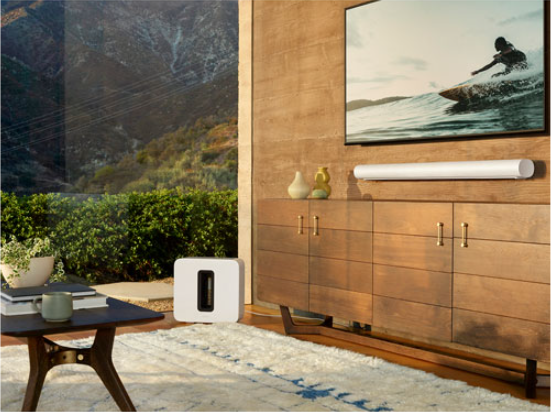
A subwoofer is designed to reproduce low-frequency sounds and is made up of a few key components. Each of these components can vary significantly, affecting not only the sound quality but also the price and suitability for your specific needs. Let’s delve deeper into each of these key components and what variations you might encounter when shopping for a subwoofer.
>>Driver
The driver is the heart of the subwoofer, responsible for converting electrical signals into sound waves. It consists mainly of a cone, a magnet, and a voice coil.
Variations:
Size: Common driver sizes range from 8 to 15 inches. Larger drivers can produce deeper bass, but they also require more space and power.
Material: Cones can be made from various materials like paper, aluminum, or composite materials. Each offers a different balance of stiffness, weight, and responsiveness.
Voice Coil: Single vs. dual voice coil options exist, affecting the subwoofer’s wiring flexibility and impedance.

>>Amplifier
The amplifier provides the necessary power for the driver to function. It is generally integrated into powered subwoofers but comes as a separate unit for passive subwoofers.
Variations:
Wattage: Ranges from around 50 watts to over 1000 watts. Higher wattage usually results in more powerful bass but can be overkill for smaller rooms.
Class of Amplifier: Class A, AB, and D are common types, each with their own pros and cons regarding efficiency, heat management, and sound quality.
>>Enclosure
The enclosure, or the box that houses the driver and amplifier, plays a critical role in sound quality.
Variations:
Design: Sealed, ported, and bandpass are common designs. Sealed enclosures are compact and offer accurate bass, while ported and bandpass designs are more efficient but may sacrifice sound quality.
Material: MDF (Medium Density Fiberboard), hardwood, and even metal are common materials, affecting the subwoofer’s weight, durability, and resonance.
Shape: Most are box-shaped, but you’ll also find cylindrical or even triangular enclosures designed for specific placement needs.
Understanding these key components and their variations will help you make an informed decision when choosing a subwoofer that fits your specific audio needs and spatial constraints.
How to use a subwoofer
Setting up and using a subwoofer involves more than just connecting a few cables. Here’s an expanded step-by-step guide to help you get the most out of your subwoofer.
Step 1: Connection

First things first, you need to connect your subwoofer to your audio receiver or amplifier. Different kinds of cables and connections can be used for this, so choose the one that’s compatible with your equipment.
Variations:
RCA Cables: Most powered subwoofers have a RCA input, making this the most common connection type.
Speaker Level Inputs: Some subwoofers can connect directly to the speaker outputs on your amplifier, particularly useful if your amp or receiver lacks a dedicated subwoofer output.
Wireless: Some modern subwoofers offer wireless connectivity, eliminating the need for physical cables but sometimes at the expense of audio fidelity.
Step 2: Positioning
The placement of your subwoofer can dramatically affect its performance. Spend some time experimenting with different locations to find the one that delivers the best sound.
Variations:
Front, Back, Side: Try placing the subwoofer at the front, back, or sides of the room and listen to how it impacts the sound.
Height: Most subwoofers are floor-bound, but some setups might benefit from elevating the subwoofer.
Room Acoustics: The room’s shape, size, and materials can affect how the bass sounds, so consider this when positioning your subwoofer.
Step 3: Calibration
Once you’ve positioned your subwoofer, it’s time to calibrate it with your existing audio system. Many modern receivers have automatic setup programs that will do this for you, but manual tweaking is often necessary for optimal results.
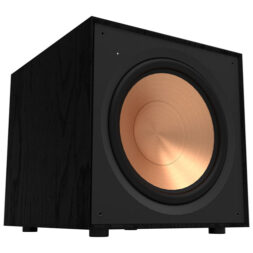
Variations:
Crossover Frequency: This determines the point at which low-frequency sounds are diverted to the subwoofer. A common starting point is 80 Hz.
Volume or Gain: Set the volume so that the bass integrates well with the rest of your audio system.
Phase Control: Some subwoofers have a phase switch that helps the subwoofer work better with other speakers.
Step 4: Testing
Finally, it’s time to put your subwoofer to the test. Play a variety of audio—music, movies, and games—to see how well the subwoofer is performing. Listen for balanced, yet powerful bass that complements, rather than overwhelms, the overall sound.
Variations:
Sound Test Tracks: There are dedicated subwoofer test tracks designed to help you assess performance across a range of frequencies.
Real-world Content: Don’t just rely on test tracks. Use content that you commonly consume to make sure the subwoofer fits your everyday needs.
Adjust and Re-test: It’s likely you’ll need to go back to the calibration step and make some tweaks. Fine-tuning is an iterative process, but it’s well worth the effort.
Taking the time to properly set up and calibrate your subwoofer will make a significant difference in your audio experience, ensuring that you get the most bang—or boom—for your buck.
What kind of audio sounds best with a subwoofer as part of a home audio system?
The incorporation of a subwoofer into your audio system can elevate the experience across multiple types of media. However, certain kinds of audio content will especially benefit from the added depth and richness that a subwoofer can provide. Let’s delve deeper into which types of audio shine when paired with a good subwoofer.

Movies and TV Shows
The value of a subwoofer in a home theater setting cannot be overstated. Here’s why:
Special Effects: Explosions, car chases, and other high-intensity moments are significantly enhanced.
Soundtrack: A good score can be transformative, and a subwoofer adds an emotional layer to those cinematic moments.
Dialogue: While it’s not the main attraction, a balanced system with a subwoofer can even make dialogue clearer by freeing up other speakers to focus on mid and high frequencies.
Best Genres:
Action/Adventure
Sci-Fi/Fantasy
Thriller/Horror
Music
Music lovers will find that a subwoofer can bring new life to their favorite tracks.
Low Frequencies: Genres like hip-hop, EDM, and reggae rely heavily on bass, making a subwoofer essential for true audio reproduction.
Acoustic and Orchestral: The depth provided by a subwoofer can bring out the richness in instruments like cellos, double bass, and timpani.
Live Performances: Ever notice how live music often feels more ‘alive’? A subwoofer can help mimic this experience by capturing the room ambiance and low-end nuances.
Best Genres:
Hip-Hop/Rap
Electronic/Dance
Classical
Jazz
Gaming
Gamers can also benefit significantly from adding a subwoofer to their setup.
Immersive Experience: Low-frequency sounds add a layer of immersion, making in-game environments feel more realistic.
Sound Cues: Games often use audio cues to signal important events. A subwoofer can make these cues more noticeable and impactful.
Game Types: First-person shooters, racing games, and adventure titles are among the game types that gain the most from a subwoofer’s capabilities.
Best Game Types:
First-Person Shooters
Racing Games
Adventure/RPGs
Understanding the kinds of audio that benefit most from a subwoofer will help you optimize your setup for what you listen to or watch the most. Whether you’re setting up a new home theater system, upgrading your music listening experience, or looking to get the edge in your gaming, a subwoofer can provide that extra oomph that takes your audio to the next level.
How many subwoofers do I need? Navigating the single vs. multiple subwoofers
The question of how many subwoofers to incorporate into your audio system can be more complex than it first appears. While the ‘more is better’ philosophy may instinctively apply for some, it’s crucial to weigh several factors to determine the right number of subwoofers for your specific setup. Let’s dig into those considerations.

>>Room Size
The dimensions of your room play a massive role in determining how many subwoofers you might need.
Small Rooms: In compact spaces, a single, well-placed subwoofer can often provide sufficient bass coverage.
Medium to Large Rooms: Larger rooms might require multiple subwoofers to fill the space adequately and offer a more even bass distribution.
>>Audio Preferences
What you want from your audio setup can also influence the number of subwoofers you should consider.
Casual Listeners: If you’re not extremely picky about your audio, a single subwoofer will likely suffice.
Audiophiles: Those who demand more precise, accurate bass reproduction often opt for multiple subwoofers to minimize room-related audio anomalies.
>>Budget
Cost is an undeniable factor when choosing how many subwoofers to purchase.
Affordability: A single subwoofer is, of course, less expensive and often sufficient for general use.
Investment: If you’re willing to invest more for high-quality audio, multiple subwoofers can deliver an unparalleled listening experience.
>>Calibration and Complexity
Integrating multiple subwoofers may require more time, effort, and possibly additional equipment to calibrate correctly.
Single Subwoofer: Easier to calibrate and integrate into your existing setup.
Multiple Subwoofers: May require advanced calibration techniques and possibly an external signal processor to achieve the best sound.
Benefits of Multiple Subwoofers
While a single subwoofer can do a competent job, there are definite benefits to adding one or more subwoofers:
Even Bass Distribution: Multiple subwoofers can help eliminate ‘dead spots’ and ‘hot spots’ in a room.
Reduced Distortion: With more subwoofers sharing the load, each can operate at a lower volume level, often resulting in reduced distortion and cleaner bass.
Conclusions
The ‘right’ number of subwoofers is highly dependent on individual circumstances like room size, personal audio preferences, budget, and willingness to engage in complex calibration. However, understanding these considerations will guide you in making an informed decision that elevates your audio experience to the level you desire.
Are Subwoofers Expensive? Understanding the Cost Factors
The question of cost is one of the most frequently asked when it comes to purchasing a subwoofer. While it’s easy to think that a higher price always equates to better quality, the reality is far more nuanced. Subwoofers come in a broad price range, and various factors can influence how much you’ll end up spending. Here’s a deeper look at those factors.
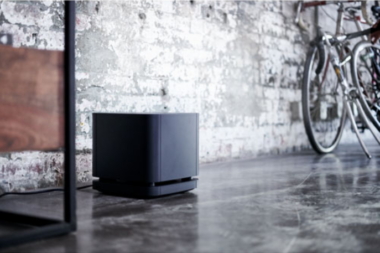
>>Entry-Level Subwoofers
These subwoofers are suitable for small rooms and modest budgets. They offer basic features and are generally easier to set up.
Price Range: $50 to $200
Features: Usually include basic connectivity options like RCA and perhaps speaker-level inputs. Most lack advanced calibration options.
>>Mid-Range Subwoofers
Ideal for those who want a balance between price and performance. These subwoofers offer better build quality and additional features compared to entry-level models.
Price Range: $200 to $800
Features: Better driver materials, more powerful amplifiers, and some may offer advanced calibration options or even app-based controls.
>>High-End Subwoofers
Designed for audiophiles and those looking for cinema-quality sound, these subwoofers offer top-of-the-line components and features.
Price Range: $800 to $3000+
Features: Exceptional build quality, extremely powerful amplifiers, advanced calibration options, and often, a range of connectivity options including balanced XLR inputs.
>>Custom Installation
If you’re looking for something uniquely tailored to your home, custom-installation subwoofers can be built into the architecture of your space.
Price Range: The sky’s the limit, but generally starts at around $1000.
Brands: Custom audio companies or high-end brands offering bespoke services.
Features: Custom-built to your specifications, these offer the ultimate in both audio quality and aesthetic integration.
>>Additional Costs
Cabling: Quality cables can range from $10 to $100.
Calibration Tools: Some may opt for sound meters or professional calibration services, which can add to the overall cost.
Stands or Mounts: Depending on your setup, you might need a stand or mount, which can add anywhere from $20 to $200 to your budget.
So, are subwoofers expensive? The answer varies significantly based on your needs, the features you desire, and your budget. Whether you’re a casual listener or an audiophile, there’s likely a subwoofer out there for you. Understanding the factors that contribute to a subwoofer’s price will help you make an informed decision that aligns with your audio goals and financial constraints.
Where is the best place to put a subwoofer in my home? Exploring ideal locations
Finding the right spot to place your subwoofer can be akin to a game of hide-and-seek with sound waves. The placement has a dramatic effect on how well the subwoofer integrates with your other speakers and fills the room with sound. While there’s no one-size-fits-all answer, several guidelines can help you find the best location for your subwoofer.
>>Corner Placement
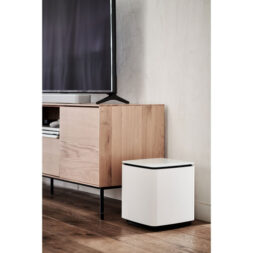
Placing a subwoofer in a corner can lead to louder, but sometimes boomier, bass.
Pros: Amplifies the output and is great for maximum impact.
Cons: Can lead to distorted or muddy bass. Not ideal for music that requires tight, precise bass.
Best For: Home theaters where you want to feel the impact of special effects.
>>Along the Front Wall
Positioning the subwoofer along the same wall as your front speakers is often a good starting point.
Pros: Creates a cohesive soundstage with the other speakers, which is good for music and movies.
Cons: May require more tweaking to blend seamlessly with main speakers.
Best For: Multi-purpose systems used for both movies and music.
>>Mid-Point of Side Wall
Some experts suggest placing the subwoofer at the midpoint of one of the side walls for even bass distribution.
Pros: Provides more even bass coverage across a broader listening area.
Cons: Might be inconvenient if the room has windows, furniture, or doorways that interfere.
Best For: Larger rooms or open floor plans where even bass coverage is essential.
>>Near-Field Placement
Near-field placement means putting the subwoofer closer to your listening position, sometimes even right behind your couch.
Pros: Offers very tight and precise bass, and also minimizes room-induced issues.
Cons: May not distribute bass as evenly throughout the room.
Best For: Critical listening and for rooms with lots of acoustic issues.
>>Multiple Subwoofers
If you have more than one subwoofer, you have additional placement options.
Symmetrical Placement: Place them in mirrored positions relative to your main listening spot for even sound.
Asymmetrical Placement: Placing them at different spots can help mitigate room-related bass issues but may require more complex calibration.
Room factors to consider
Room Acoustics: Material and shape of the room can affect sound. For instance, a carpeted room may dampen bass, requiring different placement compared to a room with hardwood floors.
Furniture: The presence of large sofas or bookshelves can affect how sound waves travel, so you may need to experiment with positioning in relation to these.
The subwoofer crawl technique
One proven method to find the ideal spot for a subwoofer is to place the subwoofer at your typical listening position and then crawl around the room at ground level to find where the bass sounds best. That spot is likely a good place to put the subwoofer.
Subwoofer placement can make or break your audio experience. Taking the time to experiment with these guidelines and techniques will go a long way in ensuring you get the best performance out of your investment. No matter your room size, shape, or intended use, proper placement is key to unlocking your subwoofer’s full potential.
Do I need a subwoofer if my television already has speakers?
While modern TVs have improved audio capabilities, they rarely match the low-frequency output that a dedicated subwoofer can provide. Adding a subwoofer will significantly enhance the audio experience, making it richer and more immersive.
Take the next step

With this guide, you should be well-equipped to find the perfect subwoofer to enhance your audio experience. Remember that a subwoofer is an investment in your audio system, and choosing the right one will provide years of enjoyment. You can find a subwoofer for your audio setup at Best Buy.









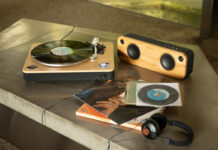
This is great and useful information about the importance of subwoofers.
Something to keep in mind is that, when it comes to multiple subwoofers, is that sound, being air in motion, and bass, especially low bass is a lot of air in motion.
This may lead many to opt for a large subwoofer, and in many cases, too large a subwoofer, whereby an acoustic “hole” is created, from the lowest bass note of the main speakers, to the highest bass note the subwoofer is set for.
In many cases, it is best to have 2 (or more)- 8″ subwoofers, in lieu of a 10″. As the 2-8″s will have a larger “combined cone surface area” which will move more air than a single 10″, and have faster impact, attack.
Comments are closed.